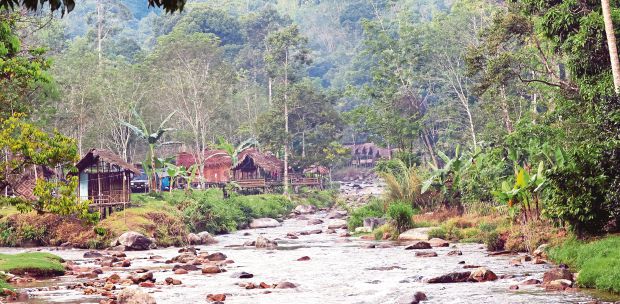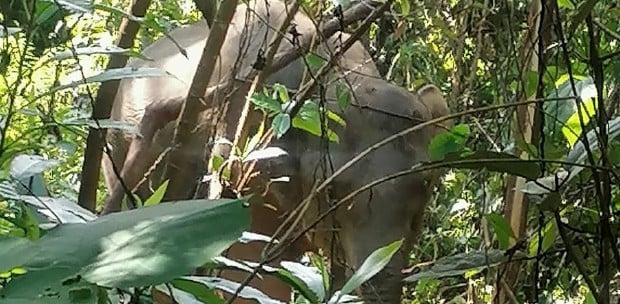“YOU guys are sure you want to do this? There’s no electricity or water supply, and they live in simple huts devoid of any modern amenities.
“And mind you, if you want to relieve yourselves, there are no toilets. It’s all done in the great outdoors.”
We sort of expected Dr Colin Nicholas to ask this question. He is the expert, after all.
He knows very well the difficulties outsiders face in getting to and living in Orang Asli settlements.
But Aizuddin and I were not put off in any way.
Early on, we knew that to get to know the Orang Asli and their way of life, we would need to make a serious effort and haul ourselves through rough paths and tracks deep in the dense jungle.
Malaysians know very little about the Orang Asli.
Until our recent extensive research, and adventures in the jungles of several states, Aizuddin and I, too, did not know any better.
From the outset, the two of us wanted to find out how Orang Asli who live on the outskirts of towns and cities, on the fringes of jungles and in the forest, continue to hold on to their traditions and beliefs.
And we wanted to share their stories with fellow Malaysians.
We sought out individuals and groups who are directly involved with the Orang Asli in one way or another.
Two of them are lawyers: Amani Williams-Hunt Abdullah, Malaysia’s first Orang Asli lawyer, and Darmain Vijaya Segaran. Both have represented Orang Asli tribes on legal matters.
Then there are Chow Lee Wan and Major (Rtd) Peter Yeow of Pertubuhan Komuniti Kasih Selangor, who have been carrying out charity work in the Semai tribe in Ulu Ruai and Ruai Tengah in Pahang for close to a decade.
Last but not least is Nicholas, of the Centre for Orang Asli Concerns, the man who is regarded as the authority on all things Orang Asli. He is instrumental in getting help to tribes across the peninsula.
All of them were very accommodating and helpful.
But they also warned us that if we really wanted to visit remote Orang Asli villages, the going would be anything but easy.
“You can drive only up to a certain point, and from then on it’s by four-wheel drive or hiking. If you guys are up for it, you are more than welcome to join us,” said Chow.
The difficulties are not overstated. There are no roads to the villages, only rough and challenging dirt paths which can be traversed only by four-wheel drives.
Sometimes, the vehicles could take us only halfway, like in the case of the Temiar village of Ong Jangking in the forest off Gerik, Perak.
We trekked the rest of the way through dense jungle.
The rainy weather made driving more challenging. Fallen trees and branches blocked the narrow tracks.
It was muddy and slippery, and puddles of water were everywhere.
All of these slowed us down considerably. We had to take great care to avoid getting stuck and damaging our four-wheel drive.
Getting stranded in the jungle where wild elephants and even tigers still roam was not an option. We were determined to make it safely in one piece to the village before nightfall and, thankfully, we did.
“You guys do not want to be out in the jungle at night as wild animals still roam freely here and can easily pick up your scent.
“Unlike we who call this forest home, you guys are out of your element here,” said Anjang, 30, a Temiar who met us halfway and along with a few villagers guided us safely to his settlement.
We first had this kind of experience when we joined Chow and Yeoh on a journey to the Semai Orang Asli village of Kampung Bertang in Ulu Ruai, Pahang, early last month.
It was a really long ride in a Toyota Hilux on an uneven dirt road.
“We are lucky it did not rain today because if it did, getting to the village would have been so much tougher with the mud.
“It would probably have taken twice as much time or longer,” Yeow grinned after the rough but thankfully safe drive to meet the warm and friendly villagers of the Semai tribe.
Truth be told, both of us were incredibly exhausted in the trips to Ulu Ruai and Ong Jangking.
It was made more arduous because we had to carry our packed personal belongings and equipment as well.
Travelling to remote Orang Asli villages and settlements is not for the faint-hearted.
For us, however, it was worth the effort. The villages lacked basic amenities such as electricity, clean, piped water and even toilets, but we got to experience the Orang Asli’s simple yet rich way of life firsthand.
At just about every Orang Asli village that we visited (and there were quite a few), we were made to feel welcome.
Of course, there were the initial inquisitive looks and stares, especially from the children, who generally shy away from outsiders who come a-calling.
While the Orang Asli who live in villages and settlements closer to towns and cities no longer lead a traditional way of life, with many of the younger ones having regular day jobs, those in remote areas still practise many aspects of the old ways.
They hunt and forage for food in the forest and live in huts.
Regardless of which tribe they come from or where they live, and in spite of the various issues and hardships that they face, they continue to persevere because they are strong-willed and resilient.
They stand and work together in just about everything they do.
The close-knit community that they live in just goes to show what loving people they really are.
They live in harmony not just with each other, but with their natural surroundings as well, which they treat with the utmost care, respect and concern because their very lives depend on it.





